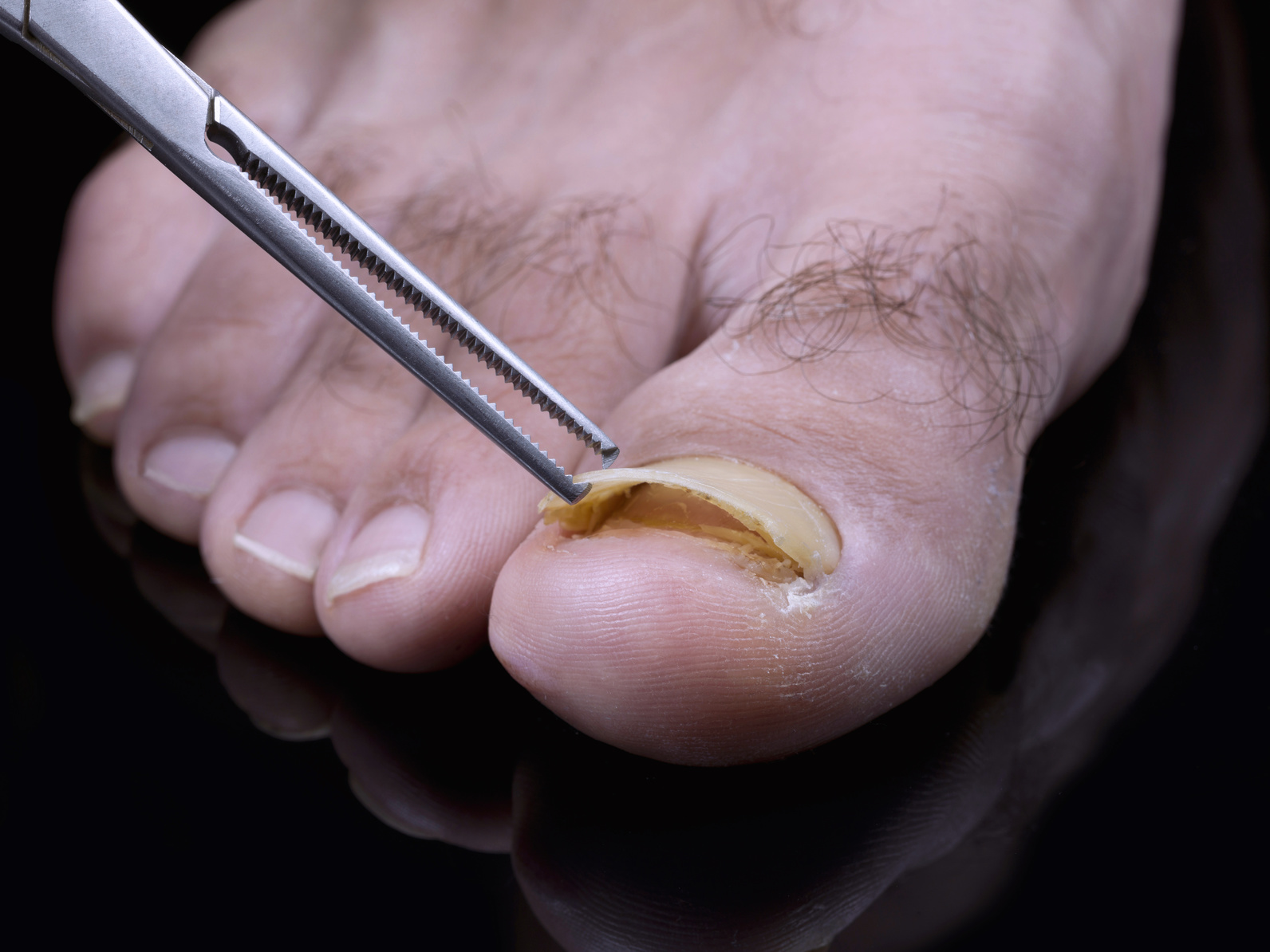What is a detached nail?
Onycholysis, is the medical term for when the nail detaches itself from the nail bed. Once a nail detaches from a nail bed, it will not reattach. Instead, a new nail will grow back. This can take up to 18 months for a toenail, and about 6 months for a fingernail.
What causes a detached nail and who gets them?
There are many reasons why a nail may separate (detach/lift) from the nail bed, some examples include:
- Injuries; this is common in people with long fingernails
- Stubbing the toe
- Tight footwear – pressure/trauma from the footwear can cause nail to lift from the nail bed
- Severe illnesses
- Fungal nail infections which cause the nails to become damaged
- Skin conditions, such as psoriasis
- Chemotherapy and some other types of medicines
- Certain chemicals and some soaps
Signs and Symptoms
Examples include:
- Nail pitting
- Discolouration to the nail
- Nail crumbling or flaking
- Ridges on the nail
- The area where the nail has lifted may turn white
Benefits of podiatry for detached nails
-
It is advisory to see a podiatrist if you don’t feel comfortable cutting your own nails, especially if you have certain health conditions such as diabetes, peripheral arterial disease, or a suppressed immune system. These conditions can cause loss of sensation or impaired circulation to the lower limb.
If nail injuries are left untreated, it can lead to infections, ulcers and other serious complications.
What would podiatry do for a detached nail?
This depends on how damaged the nail is. If the whole nail is detached from the nail bed, then nothing can be done to reattach, repair, or even replace the nail.
If adjacent tissues, nail matrix, proximal nail fold or the nail bed is damaged, it could result in scarring.
If a part of the nail is still stuck to the nail bed, it should be left intact. However, if a portion of the nail is loose and detached from the nail bed it should be removed.
Treatments provided by a podiatrist include:
- Trimming the nail, filing any sharp edges and keeping the nail smooth. This will help prevent more trauma and damage to the nail
- Applying a thin layer of petroleum jelly, such as Vaseline, and cover the area with a non-stick bandage
- If the nail bed shows signs and symptom of any infection, the podiatrist will cleanse and dress accordingly and refer on for antibiotics
The podiatrist will give advice on how to prevent infection e.g. by keeping the nail dry and ways to promote healing.
Where the nail matrix and nail bed is not damaged, the nail should grow back normally.
If nail injuries are left untreated, it can lead to infections, ulcers and other serious complications.
Summary
Onycholysis is the detachment of the nail from the nail bed which can sometimes lead to losing part or the entire nail. Causes include, nails being too long, injury/trauma to the nail, certain health conditions and chemicals, footwear and fungal infections.
Treatment depends on the severity of the nail damage and how much of the nail is detached from the nail bed. Some do not need any treatment and will resolve/heal themselves. However, once a nail has fully detached from the nail bed, it is unlikely it will reattach itself and a new nail may grow back instead.
Podiatry intervention is needed if the nail is not fully detached, if there is infection or you have certain health conditions such as diabetes, peripheral arterial disease or suppressed immune system. A podiatrist can help correctly manage the nail and provide information and advice on how to prevent it from recurring.




